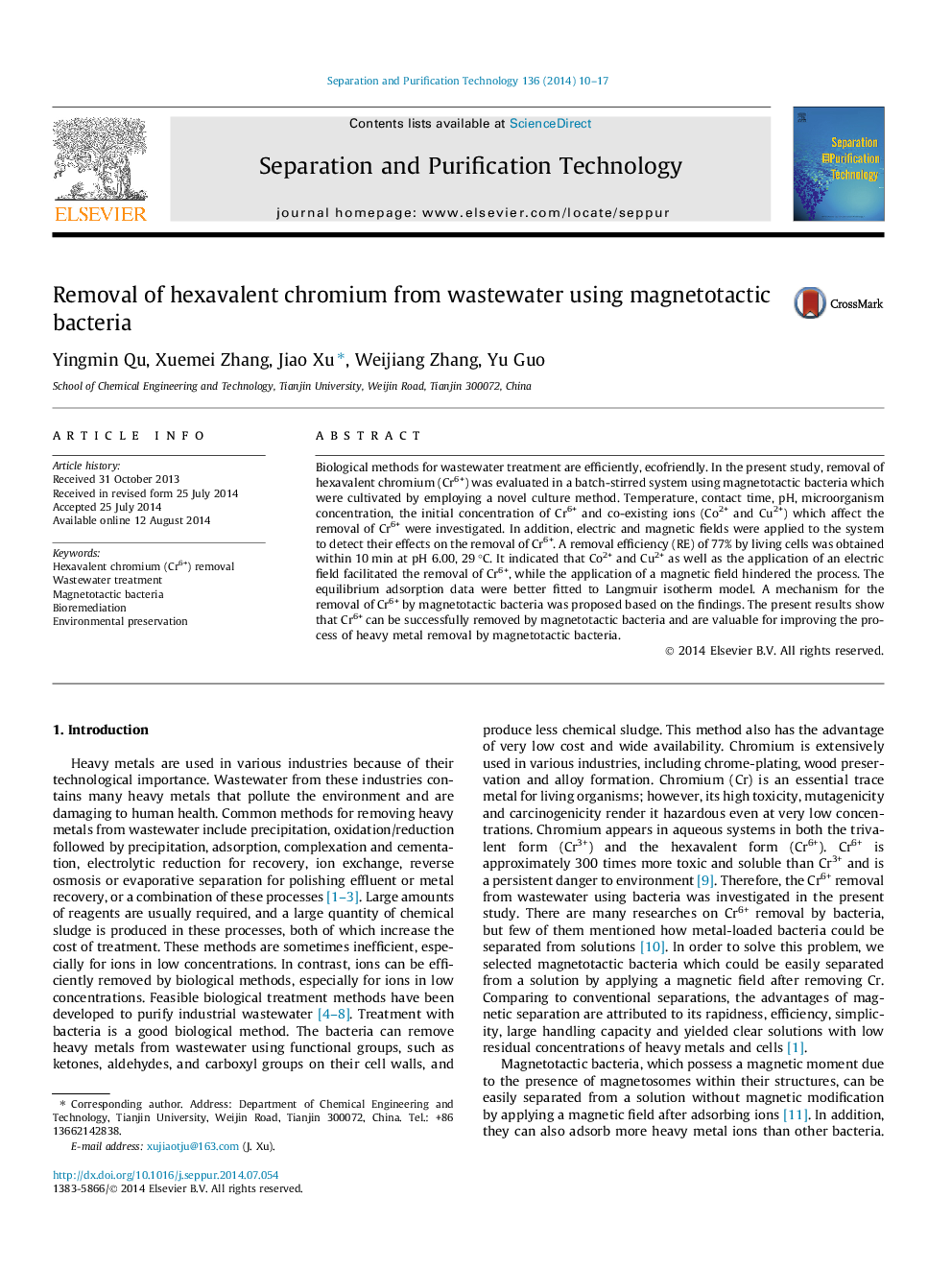| Article ID | Journal | Published Year | Pages | File Type |
|---|---|---|---|---|
| 640947 | Separation and Purification Technology | 2014 | 8 Pages |
Abstract
Biological methods for wastewater treatment are efficiently, ecofriendly. In the present study, removal of hexavalent chromium (Cr6+) was evaluated in a batch-stirred system using magnetotactic bacteria which were cultivated by employing a novel culture method. Temperature, contact time, pH, microorganism concentration, the initial concentration of Cr6+ and co-existing ions (Co2+ and Cu2+) which affect the removal of Cr6+ were investigated. In addition, electric and magnetic fields were applied to the system to detect their effects on the removal of Cr6+. A removal efficiency (RE) of 77% by living cells was obtained within 10 min at pH 6.00, 29 °C. It indicated that Co2+ and Cu2+ as well as the application of an electric field facilitated the removal of Cr6+, while the application of a magnetic field hindered the process. The equilibrium adsorption data were better fitted to Langmuir isotherm model. A mechanism for the removal of Cr6+ by magnetotactic bacteria was proposed based on the findings. The present results show that Cr6+ can be successfully removed by magnetotactic bacteria and are valuable for improving the process of heavy metal removal by magnetotactic bacteria.
Related Topics
Physical Sciences and Engineering
Chemical Engineering
Filtration and Separation
Authors
Yingmin Qu, Xuemei Zhang, Jiao Xu, Weijiang Zhang, Yu Guo,
